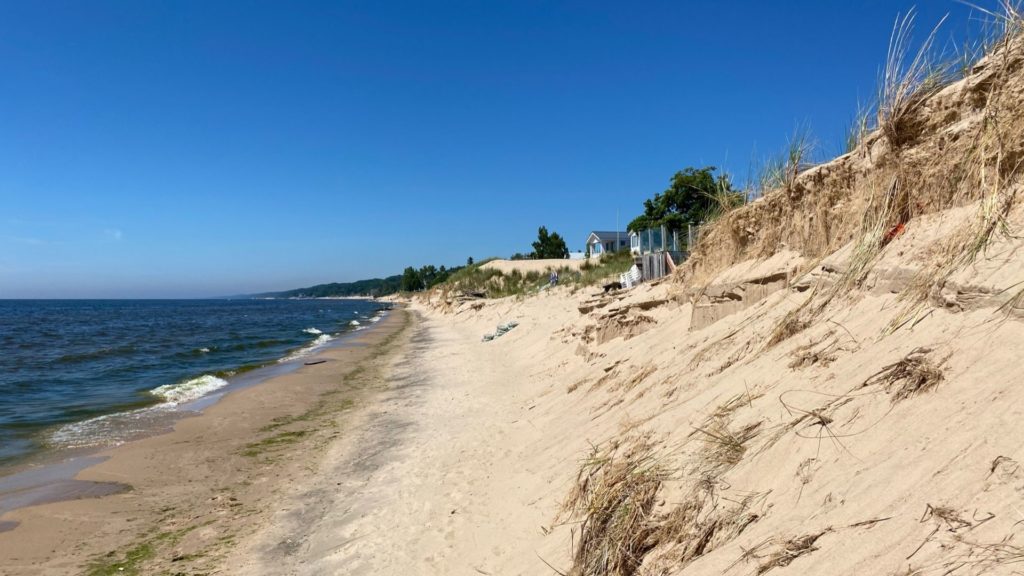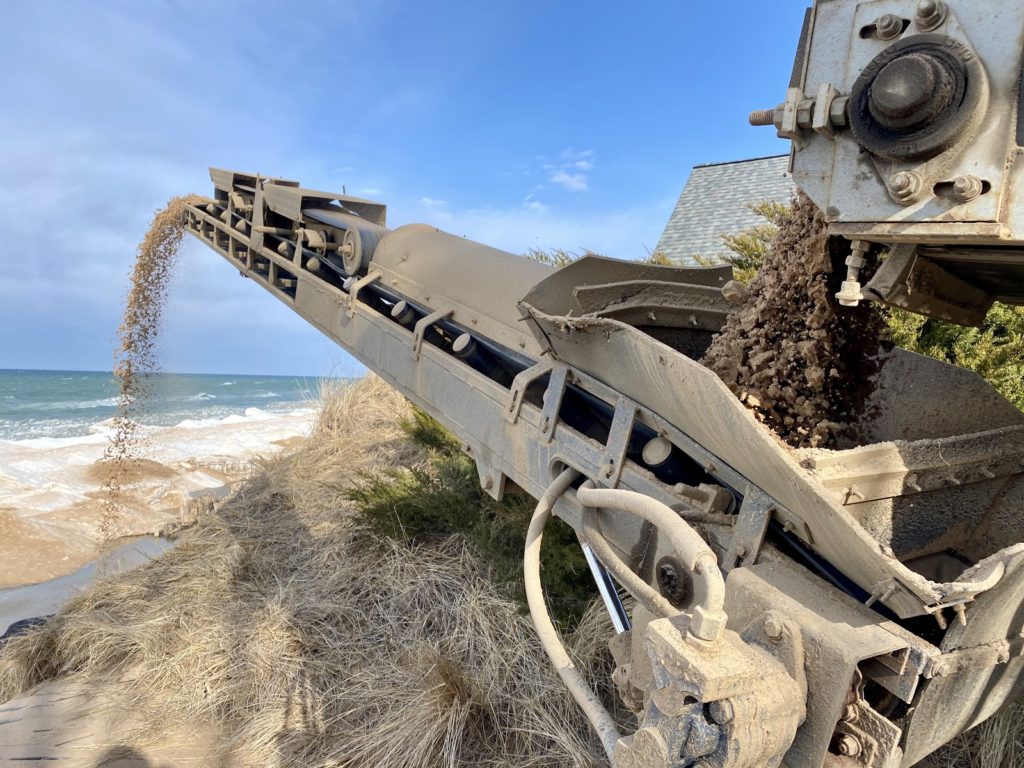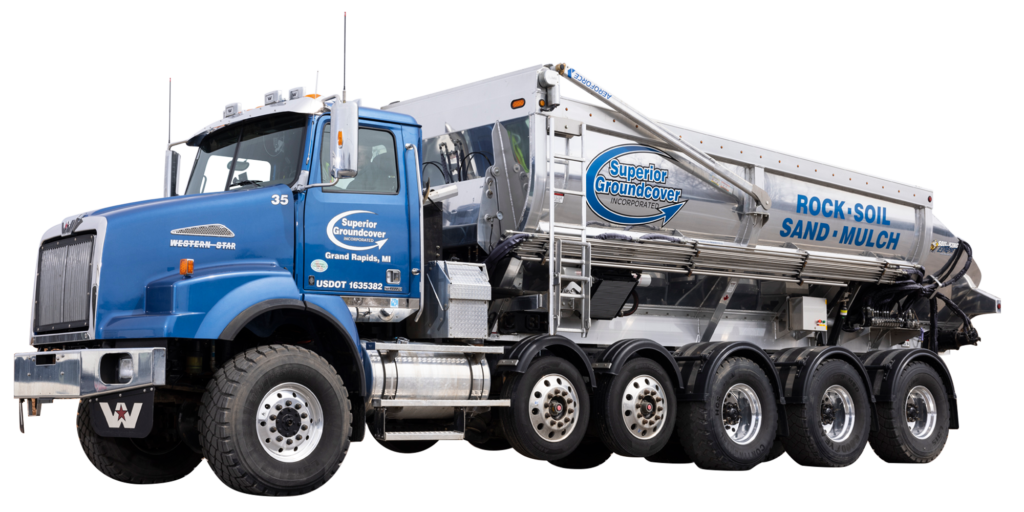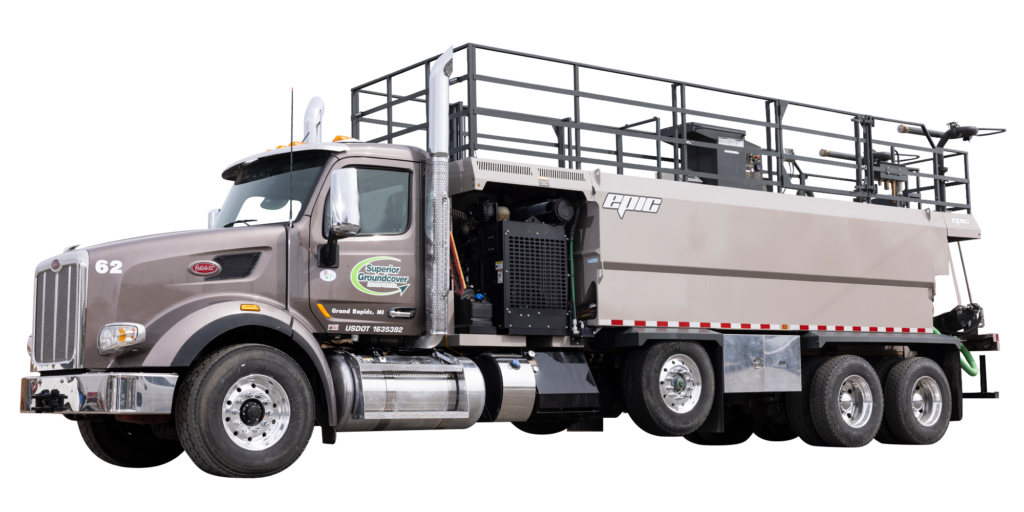The splendor of the Great Lakes is breathtaking and incomparable. Preserving this ecosystem’s natural beauty and sustainability is vital for ensuring that west side Michigan beaches remain intact and are enjoyed for generations to come.
Erosion of the beachfront in West Michigan is occurring at an alarming rate. Many Western Michigan beach towns are losing entire Lake Michigan beach properties to severe erosion caused by high water levels, winds, and heavy storms. Beach renourishment is one of many efforts to mitigate the damage, but is there more you can do?
Has your property suffered from beach erosion? How can you repair it? Is there a point of no return for disappearing beaches? This guide will help you understand beach erosion and what methods of waterfront restoration are possible and effective for Michigan beach areas.
Why Beach Sand Erodes
Fluctuating water levels, weather systems, waves, and storms cause beach sand to erode. It is a constant, often irreversible process.
Why and How Does Beach Sand Erosion Happen on The Great Lakes?
The Great Lakes are bodies of water so large that they create mini-systems of low pressure and high pressure above the surface.
These systems generate wind that blows the water toward the shore, creating waves. The stronger the wind, the higher the waves. The waves strike the beach, dislodge the sand and drag it back into the lake, only to be followed by the next wave to repeat the process over and over again.
This becomes even worse when water levels are high due to excessive rain, as is the case in recent years over the Great Lakes area.
Does Beach Erosion Happen on Inland or Private Lakes?
Michigan inland lakes with beaches are subject to different weather systems than the Great Lakes. While inland lake beaches do suffer erosion, the main issues are pollution and water health. Beach renourishment is a partial solution to both these problems.
Can Beaches Be Rebuilt or Re-Sanded?
Under normal circumstances, beaches can be rebuilt by adding sand from another source. This is called beach nourishment. There are specialized beach nourishment companies that do this kind of work.
What Is Beach Nourishment?
Beach nourishment involves getting sand to the beach either by truck or by pumping it through a pipe. This replaces the lost sand with an equivalent volume of new sand.
Does Beach Nourishment Solve the Issue of Beach Erosion?
Beach nourishment is one method used in restoring Michigan beach areas and is successful in the short-term, providing wave and storm activity lessens, or does not increase significantly.
How Is New Sand Kept from Eroding Like the Lost Beach?
A lot depends on nature when it comes to shoreline erosion prevention. Attempts at re-sanding any beach may be compromised by storms, cool temperatures, and rising water levels. Some beach nourishment companies apply a geotextile layer that provides a stable base under the sand to reduce the water’s erosion effects.
Can A Beach Be Built or Installed If One Used to Be There? Even On Inland Lakes Without The Same Level Of Wave Activity?
Yes, a beach can be created along almost any shoreline with the proper engineering. Beach installations are the most successful on lakes with low wave activity.
Is Any Beach Too Far Gone To Save?
A beach compromised to the point that cottages or other structures near it are destroyed or washed away will likely never be restored to its original state. But proper restoration measures can go a long way to preventing further loss and help the land to recover naturally over time.
How Do Great Lakes Differ from Inland Lakes?
The Great Lakes are vast bodies of water compared to most inland lakes. Some Lake Michigan beaches may be lost for a long time if environmental conditions do not change. Michigan inland lakes with beaches are much smaller and have more protection from the elements because of more forest and vegetation.
What About Dune Restoration?

Dunes are natural barriers between water and land, and their presence is vital in the preservation of lake shorelines. Grasses and other vegetation bind the sand together to form dunes.
How Can Sand Dunes Be Rebuilt? Will It Help Protect Beaches from Erosion?
Because grasses stabilize the dune sand, it is harder for the water to wash it away. These natural “sea walls” absorb the energy of waves and prevent water from flooding the land beyond.
Dune restoration may better protect beaches from shoreline erosion. However, grasses need time to grow and artificially creating dunes with excavating equipment is hazardous on land already weakened by erosion.
Where Does Replacement Beach Sand Come From?
Sand is imported from the nearest possible supply to keep the cost of transport low, typically from local quarries or nearby natural sand deposits. Sometimes, sand is dredged from deeper in the lake, then re-distributed to the beachfront.
How Is Sand Transported, Spread, and Secured?
Replacement beach sand is typically brought by a dump truck and spread on the beach using compact excavators. Some specialized beach restoration companies use a pipeline system to pump a water-sand mixture to the beachfront.
At Superior, we use our specialized sand blower truck services to transport as well as accurately place sand in tough to reach places, and without needing to tear up your lawn during installation.

What Beach Nourishment Equipment Is Used?
Typically, excavators with shovel bucket attachments distribute the sand. A motorized tamper device can compact the new sand to stabilize it. If possible, a geotextile layer is installed to compartmentalize the sand and increase its density. The issue with these methods is that all this heavy equipment can be tough on your lawn and even put a lot of weight on your bluff.
As mentioned, we use our sand blower and stone slinger trucks to install sand, stone and more. This makes it so no heavy equipment is needed on your lawn or near the edge of the bluff.
How Long Does It Take?
Once the replacement sand arrives, a beach can be installed or repaired in a day.
Is Beach Renourishment Effective? Is It Cost-Effective?
Beach renourishment is not a permanent solution. If conditions are severe, frequent replacing of sand and gravel is necessary and will be very costly.
How long does it take for a beach to be re-nourished? How long will this type of project last?
The actual renourishment process does not take long once all supplies and labor are on-site. Depending on the size, location, and environmental stresses, beach renourishment should last many years with proper maintenance.
Is it relatively expensive? What are the cost factors?
Individual service companies will provide advance estimates for the size and scale of any beach project. Expect to pay anywhere from $10,000 and up for a typical dune restoration project.
At a base price of $10,000, renourishing a beach is no more expensive than building an average size in-ground swimming pool. The cost factors to consider are the size of the beach, the source of the sand, the costs of maintenance, and how often the beach is used.




